I went a little crazy in 2009, and bought the entire Douji single-mountain collection from a shop on Taobao*. I've still not tasted each cake, yet, and so this article attempts to redress the balance (a little).
*I may have mentioned before that the Taobao vendor took photographs of each cake next to a pretty little pot-plant, and the very same images were used at Puerh Shop to illustrate the cakes there!
So far, I've found the 2009 Banzhang to be a very solid little cake - if not an amazing laoshu old tree] experience, then certainly one with plenty of authentic Banzhang character. The 2009 Jingmai was a bit citric, and thinned out a touch too much, a touch too early. The 2009 Naka (a sub-region of Mengsong) was a chunky, aggressive blend that I rather liked.
The Yiwu is back on home territory for Douji's producer, the Yiwu Zhengshan Tea Co. I hope for great things.
Immediately, I am reminded of the Houdini-like artistry required to access a Douji cake. The labels on the back of the wrapper (pictured above) are useful for cataloguing one's tea, but a complete pain in the derriere to remove without damaging the paper. Go slowly!
It is second in expense only to the Banzhang cake, which is de rigueur for pricing scales. As always, the wrapper claims that it is "dashu" [big tree], but the majority of their mainstream cakes are, unsurprisingly, blended with a significant proportion of bush leaves. Douji usually do a decent job with the blend, however, which is what elevates them over many of their rivals, in my estimation.
The bing is an aromatic and attractive little minx, made from good, downy leaves. Douji cakes are often very appealing to the eye.
A very long aroma of sweet, darkened sugars. Its endurance gives me hope. Sweet straw on the tongue; rich tobacco in the nose and throat - very decent.
A mild vibrancy and a light cooling sensation suggest that at least some laoshu leaves have been included, and in a quantity sufficient to influence the overall character. Certainly, there exists a detectable contribution from plantation leaves (which are muddy and flat), but this is not a dominant component.
Not a fat, powerful tea, nor particularly viscous, but decent - limited by its plantation base, but with good leaves enough to make it an enjoyable session. I conclude that this it is definitely not worth buying more. I add a few more leaves to increase its "oomph".
The wet leaves are fairly appealing, and show that they have been handled well by the producers. What redness exists appears to be intermittent and unintentional, rather than the "wulong"-like red edges, or entirely red leaves, that one sometimes sees appearing in a blend in order to add complexity.
Decent, but not overwhelming. Douji cakes are usually near the top of the mainstream division.


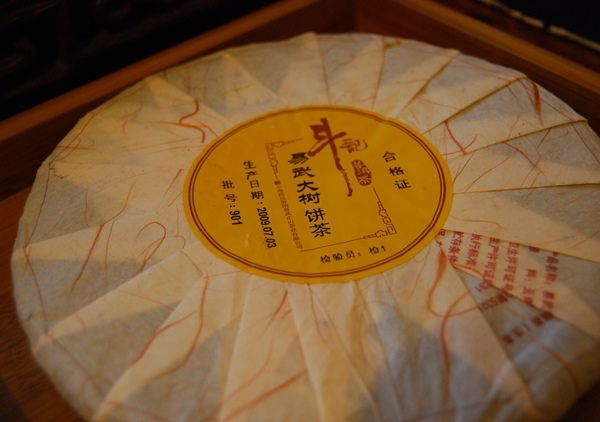

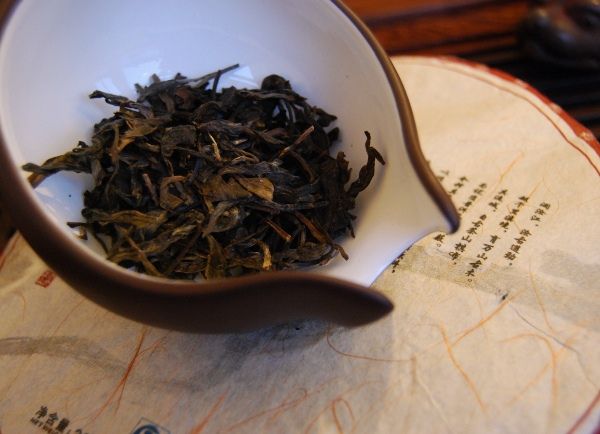
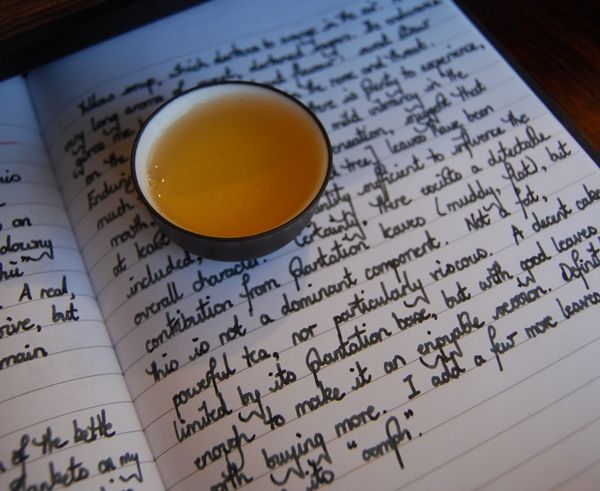
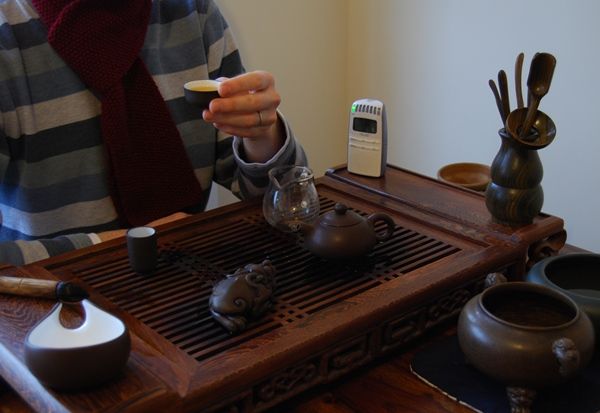
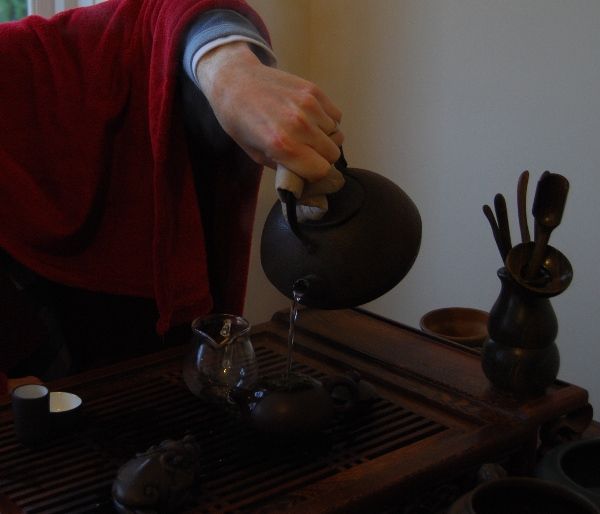
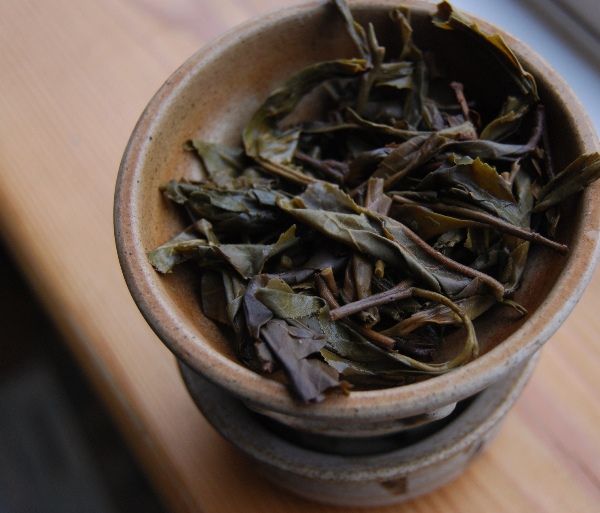
10 comments:
Ah, I'm trying this one while at work. Right at the moment, 1st infusion decent enough.
apache
On-line tasting notes! It must be the future.
I recently did just as you had last year, and bought each of the Douji 2010 "pure series" teas from various regions. Still waiting on a shipment from China ChaDao for the remainder, but I've wondered if this will give me a good representation of each region, or of just Douji's 'take' on each one? Wondering if, when it comes time to do the tastings, I should include some other 'nannuo' or 'banzhang' or 'jingmai' to round out my sense of the place of these teas? Any thoughts on this matter would be most appreciated :)
- bev
Methinks it becomes obvious when you try more and more. Jingmai and Nannuo are quite distinctive. Banzhang, the bad ones, can taste awfully like generic Menghai area teas.
After whole day drinking this in the office, I think the Douji Yiwu does beginning to crack when I push it, but brew it light is o.k. Still, given it's limitation, it's much better than the Dianyi Mahei or 2009 Dayi Mahei which is selling for eye watering USD60 by DTH (interestingly, DTH selling the Douji 2009 Jing Mai USD10 more than the Douji Yiwu.) Perhaps shah82 is right, it's really difficult to find a good recent year Yiwu. A couple of cakes is enough and I'm not in a hurry to re-visit this again. Hope some aging will improve it.
apache
Dear Radishes,
A good question. Douji gives you a decent idea, but there is a plantation base there. It's a mainstream, blended tea, so you're going to expect it.
Honestly, the only real way is just be patient. Try a bunch of teas, drinks loads, and suddenly the (major) regions become very easily distinguishable. Up until that point, it's just a guessing game. Just drink a lot, and take your time. There's no rush. :)
I found my learning process accelerated by trying as-near-to-pure versions of each as I could manageably find. Often, that meant buying, for example, Essence of Tea's own-label cakes, or Yunnan Sourcing's own-label cakes. You get your ups and downs with everything, but those two are labels are, in my experience, good, solid bets.
Steer clear of cheap, mainstream cakes - you're just going to get a mouthful of plantation. I don't drink Mengyang Guoyan, Longyuanhao, Yangpinhao, Yongpinhao, etc. these days, for that reason. They can be fun, but they're not good examples of single mountains. Dayi and Xiaguan are very specific blends with their own factory flavours - you're not going to learn mountains from drinking them, generally speaking.
To a lesser extent, Douji has a signature "house flavour". It's a creamy, savoury characteristic that becomes obvious once you've steeped yourself in their various cakes.
Again, it's not a big deal. Don't try too hard - just take your time, and it'll arrive when it's ready.
I can't overstate how much it all happens as a matter of nature, and our striving, if anything, just gets in the way.
All the best,
Hobbes
As His Grace rightly says, Jingmai and Nannuo are fairly distinctive. Good Banzhang, I find, is really characterised by what's not in it, as much as what's in it. A real laoshu Banzhang (of which I've had maybe two or three, no more) is clean - very clean. It's pure, beautiful, and just very... more. Much more everything. I'm probably not helping. :)
Dear Apache,
You've got a good eye for Yiwu - we still love that cake you so kindly gave to us last time you visited.
Good recent Yiwu? YS has some really, really solid Yiwu cakes. The 2009 series had some blockbusters. There are occasional smaller production runs of Yiwu that I like from the last few years, too. Some Mahei, some Guafengzhai.
Ultimately, I'm not at all loyal to Yiwu or Banzhang. There are some lovely cakes to be had for much more realistic prices away from the bourgois territories. In some ways, the wilder, grainier cakes one gets from outlying regions can even offer something that the "classics" cannot provide. Drink widely, as I know you do. :)
Toodlepip,
Hobbes
Nice post, Hobbes! I'd be interested in learning more about the single area teas. I understand that they're still blended to some degree, but I feel ignorant about douji, especially since most of the ones I have tried were the inexpensive ones sold at YS, and they were quite rough.
Happy drinking!
-tgp
Dear Green Poet,
The single-mountain Douji are a notch better than the "Dadou", "Shangdou", "Hongdou", and other blends. They have at least some recognisable mountain character, and are usually quite nice.
The Zhimingdu" mini-cakes are good tasters of each mountain, although mainstream.
My favourites remain the Essence of Tea and Yunnan Sourcing hand-made cakes, which are often much better than factory productions, in terms of giving you a good feeling for a particular mountain.
All the best,
Hobbes
Post a Comment